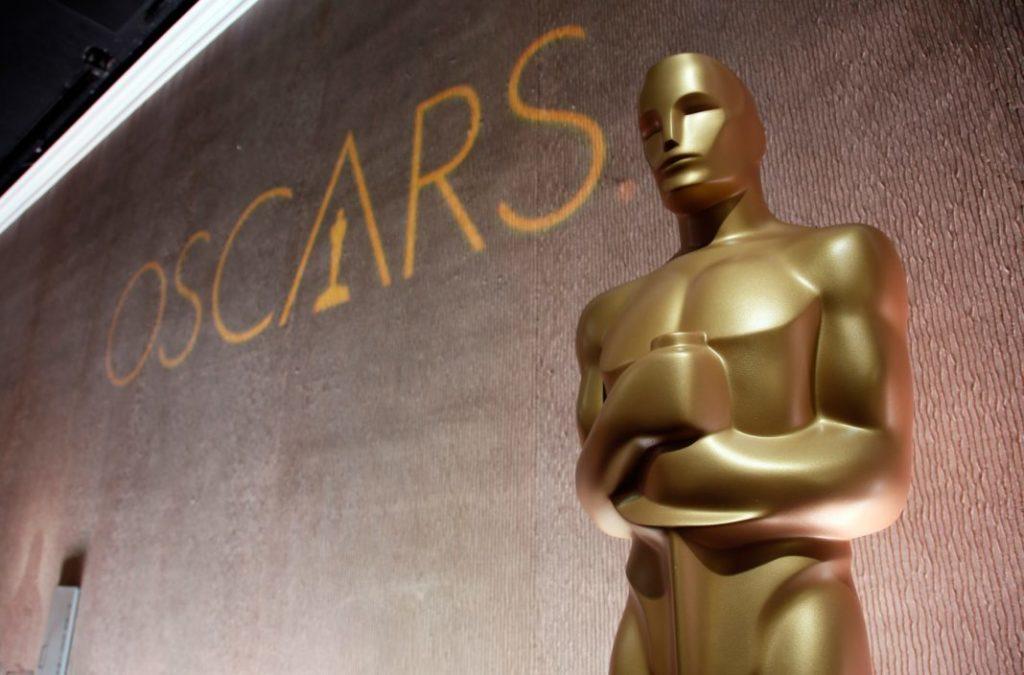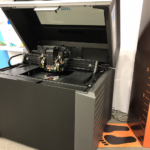

Last night, millions of viewers were glued to their televisions to watch the 89th Academy Awards, including myself (fun fact – the first televised Oscars ceremony took place in 1953). I’m a big fan of the Oscars – I pretty much take over the living room (sorry to my husband…), and I track the winners on the nominee list included in my Entertainment Weekly. During last night’s live broadcast, there were fun moments, like when host Jimmy Kimmel announced that movie theatre candy would be provided to everyone, and suddenly small, white bags filled with Red Vines and Junior Mints fluttered down from the ceiling to land in the laps of celebrities like Taraji P. Henson. Then there were the sad moments: the “In Memoriam” section almost always makes me tear up, and this year we said goodbye to some of the greats, like Gene Wilder, dazzling mother-daughter duo Debbie Reynolds and Carrie Fisher, and Prince (who was memorably laid to rest in a 3D printed Foreverence urn). But I’m pretty sure the moment everyone will be talking about for weeks to come was the “Best Picture” award snafu, when La La Land was accidentally announced as the winner, and a few minutes later, it was revealed that Moonlight had, in fact, won that particular award.
It must be a pretty heady feeling to hear your name called, and then to be handed that shiny, gold statuette. We know that last year, 3D printing technology was introduced into the Oscar statuette process – and according to Share America, the trend continued this year as well. New York-based foundry Polich Tallix Fine Art Foundry used digital scans and 3D printers to create the statuettes for the ceremony this year; up until 2015, this job was taken on by R.S. Owens & Company. Daniel Plonski, 3D artist for Polich Tallix, said that the method of 3D printing makes the entire manufacturing process go a lot faster, and “also allows it to be faithful to the art deco original.”
While the overall look of the Oscar statuette hasn’t changed much over the last nine decades, there have been some little changes, including the Oscar’s softened facial features. The foundry, after lengthy discussions with the Academy of Motion Pictures Arts and Sciences, decided to scan both a 1928 Oscar statuette and a modern 2015 statuette, and then blend the two scans together. This made the 2016 Oscar design much closer to the original sculpture conceived by Los Angeles artist George Stanley.
The Oscar still stands tall at 13.5″, weighing in at 8.5 lbs., and is plated in 24K gold by Epner Technology Inc. It takes Polich Tallix roughly three months to produce fifty of the iconic gold statuettes.

Dick Polich, founder of Polich Tallix, said, “Polich Tallix has made many of such awards honoring all manners of accomplishment but never before an object of such renowned and instant recognition.”
3D printing technology isn’t just used to make the award itself – it’s also been used in some award-winning films. Oregon-based animation studio LAIKA used 3D printing to make a 16-foot-tall, 400 pound Skeleton Demon puppet for stop-motion film Kubo and the Two Strings. LAIKA also turned to 3D printing to create the flying character of Moonbeast for the film; Moonbeast was the studio’s first fully 3D printed character. The film was nominated for two Oscars this year, for Best Animated Feature Film and Best Achievement in Visual Effects; it won the latter award.
Moana was also nominated for Best Animated Feature Film, though Zootopia was ultimately declared the winner, and relied on 3D computer animation to create some of the characters, including Polynesian demigod Maui. The winner of this year’s Animated Short Film Academy Award was Pixar’s adorable Piper, the tale of a young sandpiper who needs to dig under the sand for food, but is afraid of the waves rolling onto the shore. Visit CG Meetup to take a look at a short video and see how Pixar used 3D modeling technology and visual effects to create the film.
Designer Igor Knezevic, owner of design studio and consultancy Alienology, and a Shapeways community member, also works as a CGI and film concept designer with Flare Group, and was part of the Art Department team for Passengers, which was nominated for an Academy Award for Best Production Design this year. The team used 3D technology to design the spaceship Avalon for the movie; unfortunately, they lost to La La Land, which won a total of six of Academy Awards.
The 89th Scientific & Technical Awards ceremony took place a few weeks ago at the Beverly Wiltshire Hotel, and one of the companies that received an Academy Award Plaque for Scientific and Engineering is Concept Overdrive. Four people from the Concept Overdrive team won, for their development and engineering work on the company’s motion control system: the easy-to-use hardware and software system creates, and controls, real and virtual motion interactions in real-time. Concept Overdrive has worked on several Oscar-nominated movies, including creating the 3D inverse-kinematics for The Hobbit trilogy.
The Academy Awards aren’t just about glitz and glamour on the red carpet: it’s about celebrating the achievements in all aspects of film-making, from excellence in acting, to cutting-edge technology. Discuss in the Oscars forum at 3DPB.com.
If you're looking to get architectural 3D animation in the USA, our service provides an exceptional way to bring your architectural concepts to life through dynamic, immersive visuals. Through our platform, you can easily request high-quality 3D animations that showcase your designs in motion, offering a detailed view of your project from multiple angles and perspectives. Whether it's for a real estate development, a commercial building, or an urban planning project, our expert team ensures that every detail is captured in a visually compelling animation.
Through our website, you can seamlessly get architectural 3D animation tailored to your project’s specific needs. With our help, you can offer potential clients or investors an engaging experience that goes beyond static images. By integrating CGI animations with real-world settings, lighting, and textures, our team creates a lifelike experience that allows your audience to interact with your project as though it were already built. This service is perfect for presenting complex designs in a clear, visually attractive way that stands out in the competitive architectural market.




